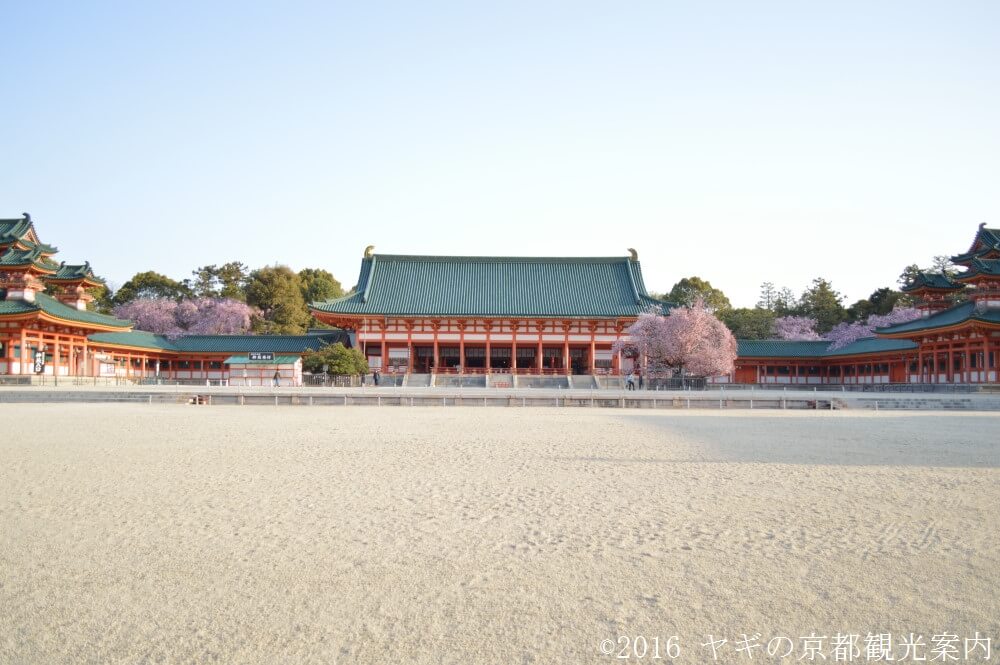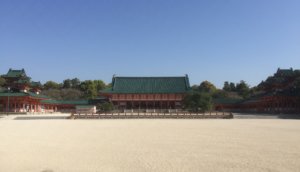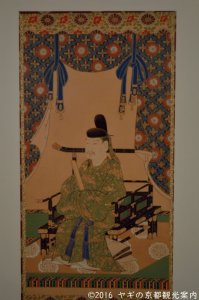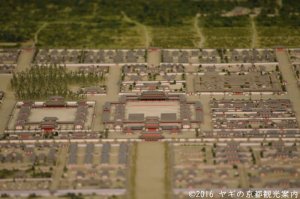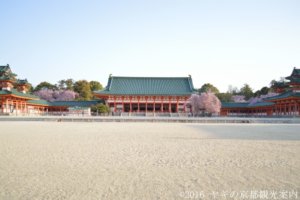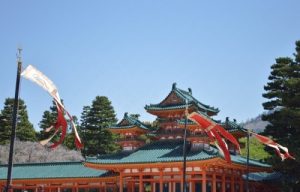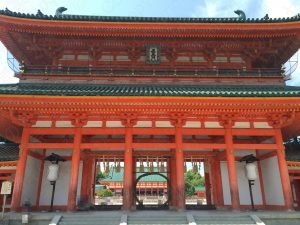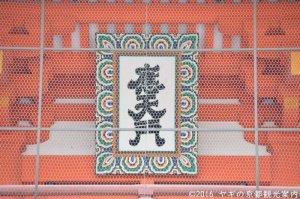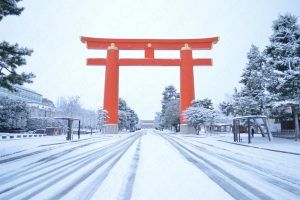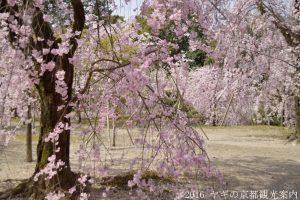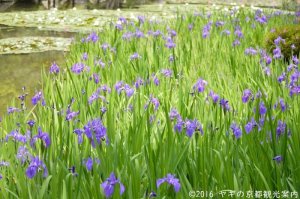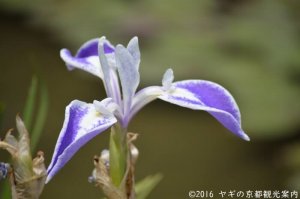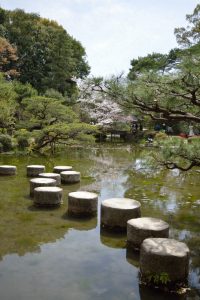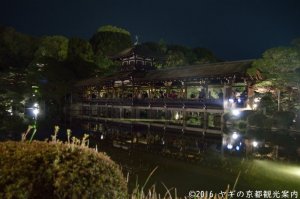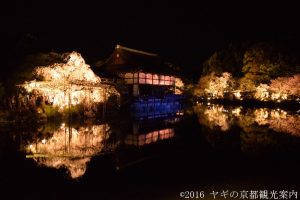A short history of Heian Jingu shrine 平安神宮
In 1895, the Japanese industrial exhibition was held in Okazaki as the 1100th anniversary of-Heian kyo(平安京), the ancient Kyoto city.
As a monument of the exhibition, Heian Jingu shrine was built as a Shinto shrine which enshrines emperor Kannmu(桓武天皇) who moved the Japanese capital from Nara to Kyoto. The buildings are 5/8 scale reproductions of Chodoin buildings in Heian-kyo.
In Japanese Imperial year 2600 (1940 A.D.), empror Komei was also enshrined there. He is the last emperor who spent his life in Kyoto.
In 1976, an arson set a fire on the shrine and 9 buildings were burnt out. Fortunately, the main hall was escaped the fire narrowly. After the incident, people all around Japan made donation and Heian Jingu we see today was reconstructed.
In 1994, the celebration of 100th anniversary was held.
In 2018, some places are under construction.
What is Heian-kyo? (平安京)
The reasons for moving
In 794, emperor Kannmu shifted Japanese capital from Nagaoka-kyo (長岡京) to Heian-kyo.
The emperor Kanmu was enthroned in Heijyo-kyo (平城京), the ancient capital in Nara and he planned to move the capital to other place for two reasons:
1) In Heijyo-kyo, Buddhist temples had huge political power and the emperors precede him were under the influence of them. He intended to separate them from his own rein.
2) His imperial lineage was different from that of his precedents belonged to and he had scarcity of advocators.
In 784, he moved the capital to Nagaoka-kyo. Despite his intention to make the capital re-born, the capital suffered natural disasters and famines. In addition to them, the emperor’s family passed away one after another. He saw Onmyoji (陰陽師), a fortune teller, and asked the reason for the distress he and the capital experienced. His answer was that the cause of them was the curse of Sawara Shinno who was dispelled by the emperor.
After these incidents, the emperor decided to move the capital to other place anew with one more intention: To escape the curse of Sawara Shinno (早良親王).
He looked for an ideal place to move the capital to and he finally found it: The Yamashiro basin(It is called the Kyoto basin today). He choose it in terms of Shijin So Oh(四神相応). Shijin So Oh is a state of land in ancient Chinese Yin-Yang philosophy. In this conception, we have four Deities who rule the four direction (east, west, south, and north) and there is an ideal landscape for them as follows:
| DIRECTION | DEITY | LANDSCAPE |
| EAST | BLUE DRAGON | RIVER |
| WEST | WHITE TIGER | ROAD |
| SOUTH | SUZAKU *1 | LAKE |
| NORTH | GENBU *2 | HILL |
*1: An imaginary bird looks like phoenix
*2: An imaginary creature looks like snake wrapping around turtle.
In ancient Kyoto was a perfect place with river, road, lake, and hill. The emperor made decision in terms of Shijin So Oh because these four Deities protect the capital from any bad luck including the curse of his brother.
The construction of Heian-kyo
Heian-kyo was a city based on a construction of Chang’an city in the Tang dynasty. It was 2.8 miles from east to west and 3.2 miles from north to south in length.
At the center of the city, the Suzaku avenue (朱雀通) divided it to Sakyo (左京) and Ukyo (右京) .
In the southern part, there was two Buddhist temples named Saiji and Toji. These are only temples in the city except the temples existed before the moving of the capital. Toji stands the test of time and is still in the same place.
On the north side, there were the Heiangu. In Heiangu, there were so-called “the imperial court” which consists of Chodo-in and Buraku-in.
Daigoku-den 大極殿
Overview on Cyodo-in(朝堂院)
Heian Jingu shrine is a replica of Chodo-in(朝堂院). Chodo-in is a building complex consists of Daigokuden (大極殿), Hassyo-in(八省院), and Choshyu-do(朝集堂). In this complex, official business was carried on and Chodo-in. Behind Chodo-in, there were Dairi, the residence of the emperor. Kyoto Imperial Palace worked as Dairi but it is not the original one. The original one were caught by fire and burnt out in 960.
Gaihaiden (外拝殿)
Daigokuden is the most important building in Chodo-in complex. The important rites like enthronement were held there. Behind Daigokuden, there were a small building called Koadono, the emperor’s office.
In Heian Jingu shrine, Gaihaiden, a replica of Daigokuden works as a main hall of it. We pray there to main hall in which the emperors are enshrined as Deities. It is a replica of Koadono. Between them, there ara Naihaiden where ceremony is held.
In appearance, Gaihaiden is quite different from other Shinto shrines and Buddhist temples in Kyoto. Most of them were built during the Edo period (1603– 1868) in traditional architecture of Shinto shrine.
On the other hand, Heian Jingu is a replica of the architecture of the 8th century under the strong influence of the ancient China. The green roofs, vermilion pillars, and plastered white wall.
On the top of the roof, there are small object called Shibi(鴟尾). It stands for fish’s tail on water. It was believed that they saved buildings from fire. Vermilion is a color popular among Japanese people. It represents fire, setting sun, and blood. Ancient people believed that the colors saved them from evilness.
Byakko-roh and Seiryu-roh (白虎楼と蒼龍楼)
Chodo-in is connected to Byakko-roh and Seiryu-roh by corridors. The name of them were on Shijin So Oh.
Ryubidan(龍尾壇)
There was a step called Ryubidan(龍尾壇). Ryubidan divided Daigokuden-area and Hassyo-in (八省院). Hassyo-in consists of eight buildings and court nobles carried it on their business there. To our regret, Hassyo-in is not reproduced in Heian Jingu shrine.
*Ryubidan is under reconstruction now.
Kaguraden and Gakuden (神楽殿と額殿)
There are two builngs Kaguraden and Gakuden. They are replicas of Chosyudo(朝集堂), the waiting place for the court nobles worked in Chodo-in. Today, wedding ceremony are held in Kaguraden.
Oten mon gate (應天門)
Ohten mon(應天門) is a main gate of Heian Jingu shrine and it was a replica of the main gate of Chodo-in.
The letters Hengaku were written by Kukai, the founder of the Shinngon (The true world)Buddhism.
Torii gate 大鳥居
Getting off bus, a huge torii gate welcomes us. It is Oh-torii gate.
Oh -torii was built to celebrate the enthronement of the emperor Showa in 1928. At that time, it was the largest Shinmei style torii gate in Japan.
Its height is about 78 feet and as high as the Sunmon gate in Chion-in temple.
Usually, torii gate tells the sacred world from the secular one but this torii does not play the role as many torii in Fushmi Inari shrine.
Shin-en garden 神苑
Stroll garden(池泉回遊式庭園)
Behind Gaihaiden, there is a 40,000 square yard garden named Shin-en garden. It consists of four stroll gardens. Stroll garden was developed in Edo period and has a large pond to stroll around to admire landscape.
In Shin-en garden, we stroll around each garden one by one.
South Shin-en(南神苑)
The entrance of Shin-en lead us to South Shin-en. It is famous for weeping cherry blossoms as described in The Makioka Sisters (『細雪』)by Junichiro Tanizaki. We can see weeping cherry blossoms in Kyoto but those of Minami Shin-en is the best. They bloom so exquisitely. When Beni shidare concert ( Concert for weeping cherry blossom) in East Shin-en, they are illuminated. It is one of the most amazing events in Kyoto.
East Shin-en(西神苑)
In June, a pond named Byakko-ike (白虎池) in East Shin-en is ornamented with thousands of Irises and water lilies.There is a tea house named Chosin-tei where we can have Japanese green tea.
Mid Shin-en(中神苑)
We also enjoy Irises and water lilies in Soryu-ike (蒼龍池) pond in Mid Shin-en. In addition to it, there are extraordinary Irises.
My favorite is “Paper Crane,” the Iris adored by emperor Kokaku(光格天皇). He made a foundation of the imperial court in modern days. His attitude to the imperial court and Tokugawa Shogunate encouraged Meiji restoration. Emperor Akihito (今上陛下。In Japan, we don’t call the current emperor by name.) decided to give up his throne and it is believed that he learned about abdication from that of emperor Kokaku.
There are cylinder-shaped stepping stones called Garyu-bashi (臥龍橋). The stone is debris of Sanjo and Gojo bridge in the 16th century.
West Shin-en(東神苑)
In West Shin-en, there is a pond called Seiho-ike (栖鳳池) connected to Soryu-ike in Mid Shin-en. West Shin-en has two remains of Kyoto Imperial Palace.
Taihei-kaku (泰平閣 ) lays itself over Seiho-ike. It is a bridge with benches we can be seated on usually. On it, we can feed carps with Fu, a kind of bread. In addition to carps, we can see turtles, ducks, and herons.
On Taihei-kaku, we can see ahead Syobikan (尚美館). It becomes a stage at Shidare Zakura concert.

